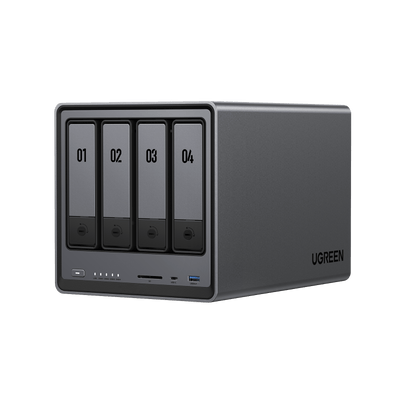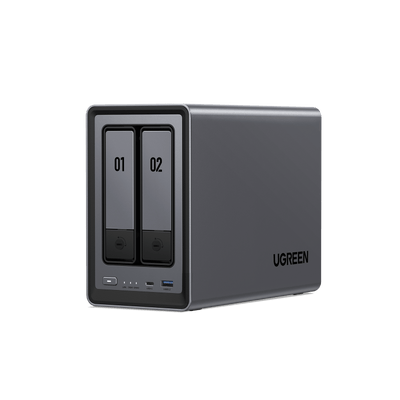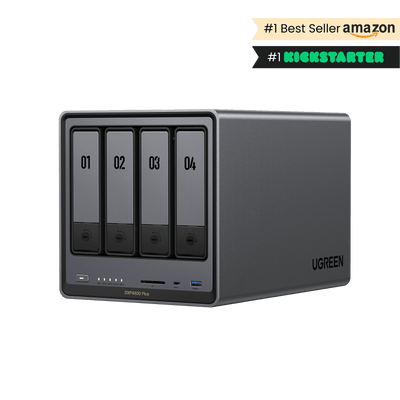Optimize NAS Power Consumption: Practical Tips for Efficiency
In our previous discussions, we explored how much power NAS storage consumes while we strive to balance our technological needs with environmental responsibility. In an age where sustainability is paramount, optimizing power consumption isn’t just a luxury; it’s an imperative.
Key Takeaways:
- Consolidate storage drives: Use fewer, larger drives to reduce power consumption and improve efficiency.
- SSD caching: Speeds up data access and reduces power usage by storing frequently accessed data on faster SSDs.
- Enable drive spin-down: Save energy by turning off unused drives when not in use.
- Optimize network settings: Use wired connections, upgrade hardware, and configure your network for better efficiency.
- Regular maintenance: Keep your NAS clean, updated, and monitored for better performance and lower energy usage.
- Monitor power consumption: Track and analyze your NAS’s power usage to make smarter energy-saving decisions.
- RAID configurations: Use efficient RAID setups like RAID 5 to balance performance and energy efficiency.
Consolidate Storage Drives
When it comes to optimizing your NAS setup, one of the most impactful strategies is to consolidate storage drives. Consolidating storage drives means opting for fewer, larger-capacity drives instead of multiple smaller ones. This approach not only simplifies your setup but also significantly reduces power consumption. Larger drives often boast better energy efficiency ratings than their smaller counterparts. When you run fewer drives simultaneously, you cut down on the total power drawn from your system, leading to noticeable savings on your electricity bill.

To effectively consolidate your storage:
- Choose High-Capacity Drives: Look for drives with higher TB ratings that fit your needs. Brands like Western Digital and Seagate offer reliable options that balance performance and efficiency.
- Consider RAID Configurations: Using RAID setups can enhance redundancy while allowing you to maintain fewer physical drives. RAID 1 or RAID 5 configurations provide data protection without needing excessive hardware.
- Plan for Future Growth: When selecting larger drives, consider your future storage needs. Opting for a drive with extra capacity can save you from needing to upgrade too soon. For more insights on selecting the right NAS configuration, check out this guide on choosing between a 2-bay or 4-bay NAS.
SSD Caching
In the ever-evolving landscape of data storage, SSD caching stands out as a game-changer for NAS setups.
What Exactly is SSD Caching?
It’s a technique that uses high-speed SSDs to store frequently accessed data temporarily. By doing so, it allows your NAS to retrieve information much faster than if it were relying solely on traditional hard drives.
{{UGPRODUCT}}
To implement SSD caching effectively:
- Choose the Right SSD: Look for SSDs that offer high endurance and performance ratings. Brands like Western Digital and Seagate have models specifically designed for caching purposes.
- Configure Your NAS: Most modern NAS devices come with built-in support for SSD caching, like UGREEN NAS storage. Access your NAS settings and follow the prompts to enable this feature, ensuring you allocate sufficient space for the cache.
- Monitor Performance: After implementation, keep an eye on your system’s performance metrics. Many NAS interfaces provide insights into cache hit rates and overall speed improvements, allowing you to fine-tune your setup.
By harnessing the speed of solid-state drives, you not only improve access times but also contribute to a more efficient and long-lasting storage solution.

Enable Drive Spin-Down Features
One often-overlooked feature can significantly enhance energy efficiency: drive spin-down. So, what does it mean to enable drive spin-down? Simply put, it allows your NAS to automatically turn off unused drives after a designated period of inactivity. This feature conserves energy by reducing power consumption during downtime—an essential consideration for any environmentally conscious user.
To enable drive spin-down features effectively:
- Access Your NAS Settings: Most modern NAS devices have user-friendly interfaces that allow you to navigate settings easily. Look for options related to power management or drive settings.
- Set Appropriate Time Intervals: Choose a time interval that suits your usage patterns. A common setting is 10 to 30 minutes of inactivity before drives spin down—long enough for regular access but short enough to save energy when idle.
- Monitor Performance: After enabling this feature, keep an eye on how it impacts your system’s performance. Ensure that frequently accessed data is still readily available without significant delays when waking up from a spun-down state.
In summary, enabling drive spin-down features in your NAS setup is a straightforward way to enhance energy efficiency while prolonging the life of your hard drives. By allowing them to rest during inactivity, you not only save power but also contribute to a quieter and more sustainable storage solution.
Optimize Network Settings
Network settings can be the unsung hero that elevates your system’s performance. Efficient data transfer means less time spent waiting for operations to complete. When your NAS can communicate swiftly with other devices, it reduces the overall energy consumed during these processes.
To optimize your network settings effectively:
- Upgrade Your Hardware: Consider investing in high-quality routers and switches that support faster protocols like 10GbE (10 Gigabit Ethernet). These devices can handle larger volumes of data with ease.
- Use Wired Connections: Whenever possible, connect your NAS directly to your router using Ethernet cables. Wired connections provide more stability and speed compared to wireless options.
- Configure QoS Settings: Quality of Service (QoS) settings allow you to prioritize bandwidth for specific applications or devices. By allocating more resources to critical tasks, you can ensure smooth operation even during peak usage times.
- Regularly Update Firmware: Keep your router and NAS firmware up to date. Manufacturers often release updates that enhance performance and security, ensuring your system runs smoothly.
By fine-tuning these elements, you create a seamless environment where data flows freely, saving power while delivering an exceptional user experience.
{{UGPRODUCT}}
Regular Maintenance
When your NAS is clean and running optimally, it can prevent overheating, extend the lifespan of your drives, and reduce power consumption. Imagine accessing your files quickly, without frustrating delays or slow load times.
To keep your NAS in top shape:
- Clean Regularly: Dust can accumulate inside your NAS, obstructing airflow and causing overheating. Use compressed air to gently blow out dust from vents and components every few months.
- Update Software: Regularly check for firmware updates from your NAS manufacturer. These updates often include performance enhancements and security patches that keep your system running smoothly.
- Monitor System Health: Utilize built-in monitoring tools or third-party software to keep an eye on drive health, temperature, and overall performance metrics. Catching potential issues early can save you from costly repairs down the line.
By dedicating time to care for your system, you not only enhance performance but also contribute to energy savings—creating a win-win situation for both you and the environment. Read more: How to Perform Regular Maintenance on NAS Devices.
Monitor and Analyze Power Usage
By keeping a close eye on power consumption, you can pinpoint which components are drawing excessive energy. Armed with data, you can make smarter choices about upgrades or configurations.
To effectively monitor and analyze power usage:
- Utilize Monitoring Tools: Consider using smart plugs or dedicated energy monitoring devices that provide real-time data on your NAS’s power consumption. Tools like Kill A Watt or smart home systems can give you insights into how much energy your setup is using at any given moment.
- Leverage Software Solutions: Many NAS systems come with built-in monitoring software that tracks power consumption metrics. Explore these features to gain insights into usage patterns over time—knowing when your system is most active can help you optimize settings.
- Set Baselines and Goals: Establish baseline power consumption levels for your NAS and set goals for improvement. For instance, if you notice spikes during certain hours, consider scheduling backups or intensive tasks during off-peak times to save energy.
RAID Configurations
By utilizing multiple drives in a single array, you can optimize power usage. For instance, in RAID 5 configurations, data is striped across drives with parity information, allowing for efficient storage without excessive energy consumption.
Here’s a brief overview of some common RAID levels:
- RAID 0 (Striping): This configuration splits data across multiple drives for improved performance but offers no redundancy. It’s ideal for speed but risky if one drive fails—data loss is immediate.
- RAID 1 (Mirroring): Data is duplicated on two drives, providing excellent redundancy. If one drive fails, the other keeps your data intact. It’s perfect for those prioritizing safety over speed.
- RAID 5 (Striping with Parity): This level uses three or more drives to store data and parity information, allowing for recovery in case one drive fails. It strikes a balance between performance and redundancy.
- RAID 10 (Mirroring + Striping): Combining the benefits of both RAID 0 and RAID 1, this configuration requires at least four drives. It offers high performance and redundancy but at the cost of usable storage space.
Conclusion
The importance of these strategies cannot be overstated. By adopting energy-efficient practices, you not only reduce your electricity bills but also enhance the performance of your NAS system.
We encourage you to share your thoughts or experiences with improving the energy efficiency of your NAS storage in the comments below. Subscribe to us to stay up-to-date on the latest developments in storage solutions and best practices.





